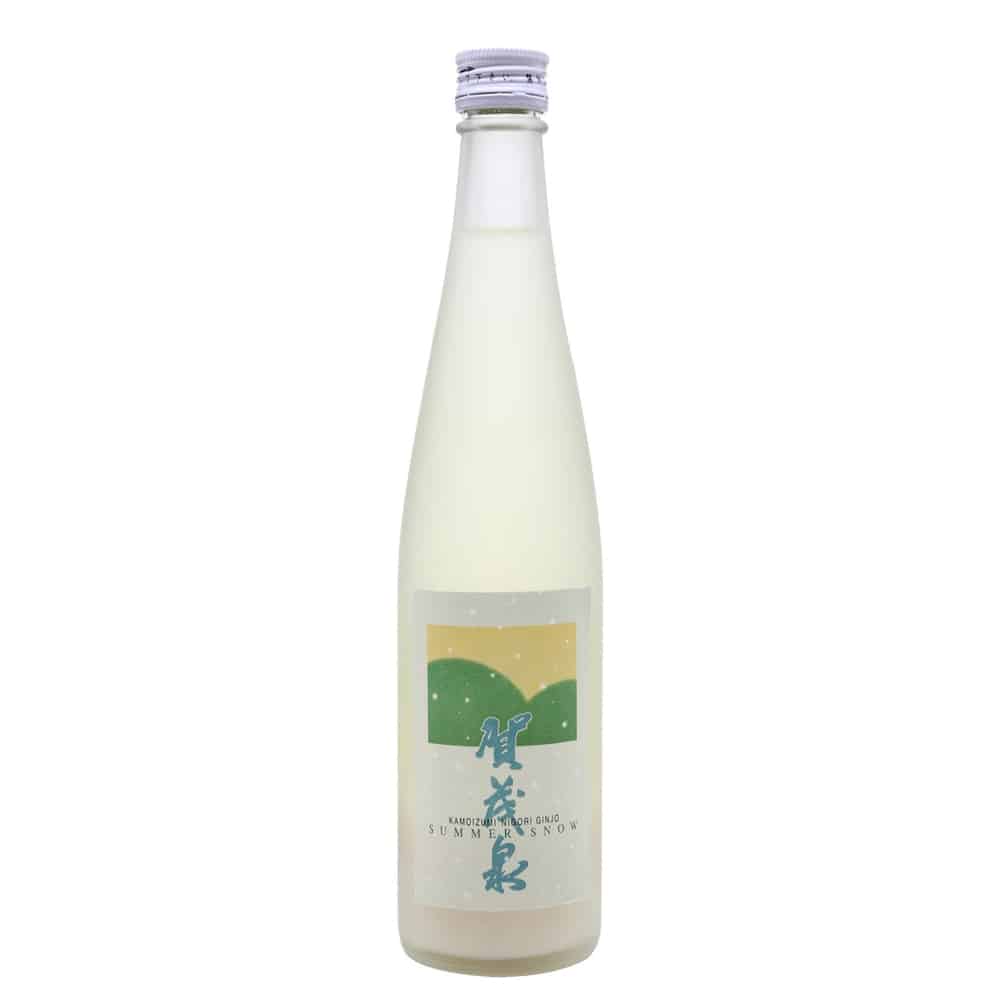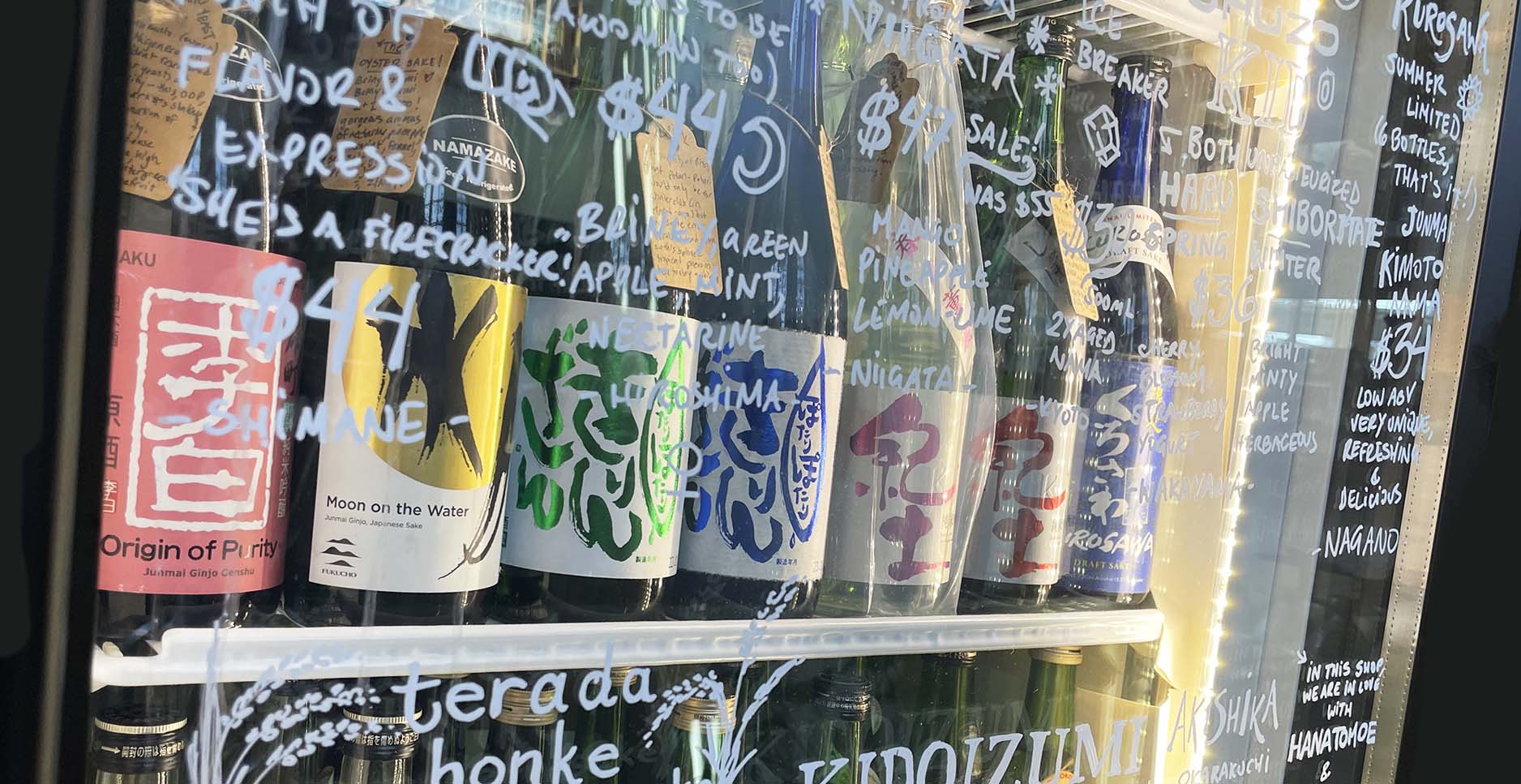
Kamoizumi Junmai Ginjo Nama Genshu Nigori "Summer Snow"
- Low stock - 2 items left
Bold and intense, with Kamoizumi's characteristically intense acidity, taut minerality, and creamy, coconutty, tropical notes. It’s like I’m biting into a midsummer wedge of honeydew melon drizzled with coconut cream… and chasing with a jump in the Seto Inland Sea. There is something intriguing, earthy, salty in the finish that makes it much more compelling than your average nigori. And at 18% ABV it’s startling how easily this nigori drinks (you have to fit all that flavor in somewhere.)
Stats:
- Brewery: Kamoizumi Shuzo
- Location: Hiroshima Prefecture
- Water: Kamo spring (from which Kamoizumi gets its name) which channels the famous, medium-hard Mt. Ryuoh water of Saijo, Hiroshima.
- Rice: Yamadanishiki grown in Higashihiroshima City in the Zoka district at a relatively high elevation of 350m (1150 ft) where nights are very cold and days are warm, slowing the rice growing process, and leading to optimal conditions for rice quality.
- Polishing: 58-60%
- Grade: Junmai Ginjo Nigori Nama Genshu
- Yeast: KA-1 (a substrain of Yeast #9)
- SMV: +1
About:
If you look at the Kamoizumi website, “Summer Snow” or anything like it is suspiciously missing. In fact, there’s no nigori for sale.
The back label tells you very little. The importer website, barren. Only after some digging did I learn that this is an unpasteurized namazake, undiluted genshu, which is made from the same base sake as their flagship “Three Dots” junmai (not yet in Oregon…working on it) and US-only 2 year aged namazume “Red Maple.” Three very different sides of the same coin. It turns out that this sake was only ever sold in the brewery tasting room and a few izakaya: a hyper-local product. But the importer tried it, loved it, and asked to bottle and sell it. So what we have is really a very special, unique, small production nigori unlike any other– and also not available in Japan. Its flavor is tangy, rich and unique, enough personality to sip thoughtfully– enough umami to warm nicely– enough body pair with Winter and enough freshness to pair with Summer.
Additional detail from the monthly club writeup, February 2023:
HOW IT’S MADE AND WHY IT TASTES THE WAY IT DOES?
In January I went into detail on what defines a nigori and how it’s made, and I’ll repeat a bit here for new members and those who want a refresher. If you’d like to skip, pop down to the subtitle: BUT WHAT ABOUT THIS ONE SPECIFICALLY?
Nigori is often called “unfiltered sake” for marketing purposes, but legally it must be filtered– and in many cases, the sake is filtered to a completely clear state before ever becoming nigori. This filtration requirement is built into the legal definition of sake: legally, sake is called seishu, translating to “filtered alcohol”. It was only in 1964 that a Kyoto brewery convinced the Japanese government to permit cloudy sake, agreeing on two authorized procedures for creating nigori sake.
The basic process of (clear) sake making starts with an alcoholic porridge, called a moromi. Moromi is the fermenting mash and consists of steamed rice, koji rice, water, and yeast. Over several weeks, the yeast and koji convert the rice to sugar, alcohol, amino acids, fatty acids, and aromatic molecules. But the rice doesn’t completely dissolve: somewhere between 50-30% of the rice solids are leftover at the end, hence the “alcoholic porridge.” Filtering the sake to make it clear can be done many different ways but all of them consist of applying pressure against the moromi so that the clear liquid can pass through a fine filter, leaving the solids behind. Delicate sake is pressed gently, and the solids (sake kasu) are soft and spongey. Everyday sake is pressed with more force, and the solids are typically dry and crumbly.
I mentioned two authorized procedures for making nigori and both involve filtration. The first method presses the moromi through a coarse filter, and the fineness of this filter determines the consistency of the nigori. However, this doesn’t give the brewer much ability to fine-tune the texture and flavor, ensure consistent outcome and yield, and it isn’t suitable for large volumes of nigori which take a long time to pass through the nigori filter.
The second method is more popular and involves filtering the sake to a clear state before adding sake kasu back in. This allows for a range of customizations: using higher quality kasu than the original sake, passing the kasu through sieves in order to achieve a consistent degree of fineness (or coarseness), or adjusting the amount of kasu to create a range of different nigori products.
BUT WHAT ABOUT THIS ONE SPECIFICALLY?
You know, I dug and dug at this question. Usually when a sake is savory and a little funky, there’s a clear reason for it– a production term, a style, something I can point to and say, “that’s why it is the way it is.” For Summer Snow and Kamoizumi, I scoured the internet for answers, listened to interviews. I texted the importer with questions until he finally got me to stop with, “I can’t give you a definitive answer because I don’t have one.” I love being able to tie a neat little bow on the sake I share with you, but that’s not always possible.
Still, I think there are a few qualities we can point to that make this nigori unique. First you get that tart, slightly funky quality that is typical for Kidoizumi’s house style…homemade yogurt, mushroomy, toasted grain…which is no surprise when you learn that Summer Snow is made from the same base sake as their “Shusen Three Dots” Junmai Ginjo (not yet available in Oregon) and “Red Maple” 2-Year Namazume: both of which share this flavor profile. But Summer Snow is distinct from either in that it’s unpasteurized (nama), undiluted (genshu), its cloudiness (sake kasu) comes from a different sake– Kamoizumi junmai daiginjo– which is drier and more refined, added after being filtered clear. And finally, this is a secret one: it isn’t labeled as namazake. So it’s stored and handled at many points in the supply chain at ambient temperatures. As a result, you get more yogurty, whey, slightly cheesy notes, which tend to emerge in the early stages of ambient temperature namazake aging. That unpasteurized quality too, lends a lot of extra acidity and brightness. And the “cask strength,” undiluted 18% ABV explains its robust, concentrated flavor.
But it’s fair to say that Summer Snow is still a bit of a mystery.
STORAGE
Store the unopened bottle in the fridge, in the dark, and enjoy within 6 months for a consistent flavor. After 6 months (even in the fridge) it’ll be moving right along the aging curve and you may, or may not, appreciate where it’s going.
I’ve had a few bad experiences in the past when this sake was exposed to light or heat, and what happens is it gets excessively sour and pickled tasting, like rotten milk. That’s what you’d call “hine-ka,” or the aroma of being “off the path.”
HOW TO ENJOY?
The conventional wisdom is to enjoy this sake chilled: pour from the fridge and let the glass sit for about 10 minutes to warm up just a touch. Served chilled, it's more refreshing and the flavors err fruity. Once it warms to room temperature the mushroomy, funky qualities are more apparent. I like to buck expectations a bit and serve nigori in wine glasses– in the shop I prefer a delicate sherry/liqueur glass. There’s something confrontational about a thick, creamy drink in an elegant glass, leaving residue along the side. You get to experience the viscosity with your eyes as well as your mouth.
If conventional wisdom is chilled, then unconventional wisdom is warmed. At the recommendation of Kamoizumi’s international sales manager Mr. Gautier, I tried Summer Snow at 95, 120 and 150F. Served at ~95F, the minerality and saltiness fade away but the acidity and alcohol gain a sharpness that sings. This taut tension snaps against the nigori’s creamy texture and I find myself returning sip after sip. Sour vs smooth! In fact, I was so drawn by the warm version and found it so food-friendly (a nigori for steak?) that for the remainder of the bottle, I didn’t return to chilling. Highly recommend this unusual approach with Summer Snow, using a shallow, wide-mouthed sake cup like a sakazuki if you are sensitive to alcohol. Any 18% ABV sake served warm is going to greet your nose with boozy vapors, and a shallow, wide-mouthed cup helps to dissipate the impact.



